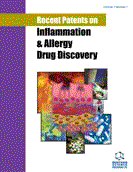Abstract
Aims: The aim of this study is to assess the neuropsychological manifestations of mercury exposure in dentists. Methods: A cross-sectional study was carried out including 64 dentists matched to a control group according to age and gender. This study protocol included a neurological evaluation, a questionnaire assessing the study groups’ general characteristics and personal factors that may affect mercury urinary excretion in both groups. EUROQUEST questionnaire and Hospital Anxiety and Depression scale (HADS) were used to evaluate the neuropsychological symptoms reported during the last 12 months. In both groups, mercury impregnation was assessed by monitoring urinary mercury. Results: In the exposed group, scores of neurological symptoms, memory disturbances and anxiety were found to be significantly higher than those in controls (p < 0.01). Mean scores of HAD Depression’s scale were higher in the exposed group than in controls. Most of the neurotoxic manifestations were correlated to the levels of urinary mercury excretion in the exposed group. Mean levels of urinary mercury were significantly higher in the dentists group than in controls, with respective values of 21.1 ± 19.6µg/g of creatinine and 0.05 ± 0.9µg/g of creatinine. In nine dentists having urinary mercury levels higher than 35µg/g of creatinine, neurological examination showed a bilateral and symmetric intentional tremor in both upper limbs. In the exposed group, the neuropsychological manifestations and levels of urinary mercury were found to be significantly correlated. Conclusion: Increased levels of urinary mercury observed in dentists suggest that exposure to mercury vapour emissions adversely affects dental professionals, therefore prevention measures should be strengthened, with a special medical supervision program of dentists exposed to mercury vapours should be implemented. We have also outlined some relevant patents in this article.
Keywords: Dentists, manifestations, mercury, neurological symptoms, neuropsychiatric occupational exposure, urinary mercury levels.
 29
29 2
2


















